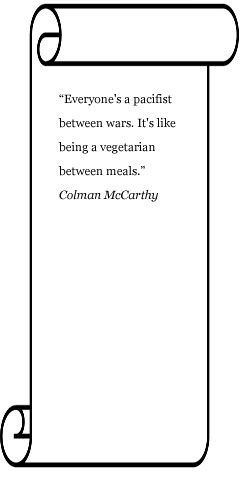Romania’s Destroyers
By Mike Bennighof, Ph.D.
July 2013
Like many small nations, the Romanian navy had grandiose
visions when it set about expansion in the late 1890s. Oil
was starting to become a prime industrial resource, and Romania
had Europe’s largest reserves by far. The 1899 program
called for six coastal battleships and some smaller craft,
but only some of the river monitors for the Danube Flotilla
would actually be built.
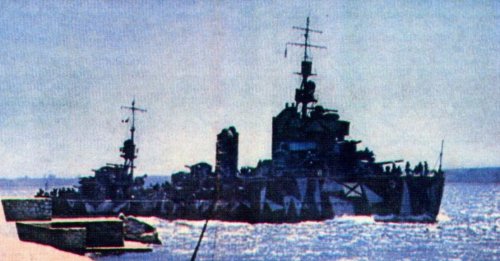
Regele Ferdinand on convoy duty.
In 1912, the cancelled battleships became instead six light
cruisers, and there would also be a dozen large destroyers
and a submarine. This time the navy actually made some headway,
ordering four big destroyers in 1913 from the Pattison yard
in Naples, Italy. These four ships, to be named Vifor,
Viscol, Vartez and Vijele, were requisitioned
by the Italian Navy in June 1915. These appear in Great
War at Sea: Mediterranean in both Romanian and Italian
colors.
Armed with six-inch guns, the four ships served the Italians
as scouts during the First World War. After the war, the Italians
returned two of them to Romania, the former Nibbio and
Sparviero.
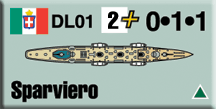
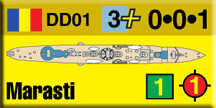
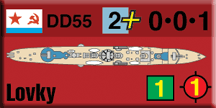
The two ships arrived in Romania in 1921, and were renamed
Marasti and Marasesti after two Romanian
victories over the Germans in World War I. The Romanians found
the six-inch guns too heavy for them, as the Italians had
also eventually decided as well. They replaced them with five
120mm guns, removing one during the war to add more anti-aircraft
weapons.
The two served throughout the Second World War as convoy
escorts, and fought two brief engagements with the far superior
Black Sea Fleet but otherwise managed to avoid destruction.
For war service they displaced 1,723 tons and carried four
120mm guns and four torpedo tubes, plus anti-aircraft guns.
Marasesti could do 34 knots, but Marasti cracked
a shaft and by the end of the war could only do 24 knots at
best.
The Soviets seized both ships in 1944, incorporating Marasti
into the Black Sea Fleet as Lovky and Marasesti
as Logkij. They were returned in 1946, and finally
scrapped in 1963.
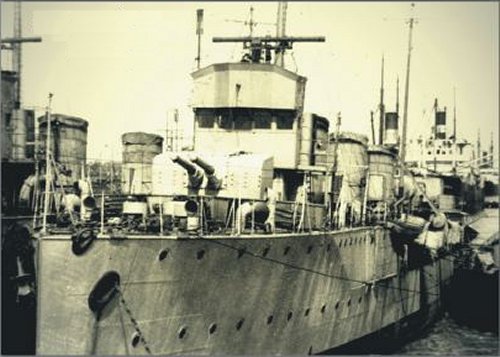
Marasti at pierside, between the wars.
The 1927 program called for a modest increase of four destroyers
and some smaller craft. Two of them were begun at the Pattison
yard once again, but the Great Depression struck down further
expansion before the second pair could be ordered. These were
slightly larger than the 1912 destroyers, but carried the
same armament and had good speed. They had been designed in
Britain and were very similar to the Royal Navy’s Shakespeare
class flotilla leaders, but had German and Swedish armament.
Named Regele Ferdinand and Regina Maria, they
also had one 120mm gun removed during the war to add more
anti-aircraft guns. For war service they displaced 1,850 tons,
carried four 120mm guns and six torpedo tubes plus an array
of anti-aircraft guns. Like the other two destroyers, they
were primarily anti-submarine escorts, and carried 40 depth
charges or 50 mines. In 1943, both received German-made S-Gerät
submarine detection gear.

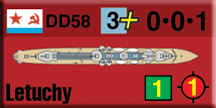
The Soviets also seized these two ships. Regele Ferdinand became Likhoi and Regina Maria became Letuchy. More capable
than the other Romanian destroyers, these were kept until
1953. They were scrapped in the late 1960s. During the war all four destroyers carried dazzle camouflage
schemes, and were distinguished not by numbers but playing
card suits: Regina Maria for example had a spade
on her bow, and Marasesti a club.
Regele Ferdinand sank at least one Soviet submarine,
the ill-fated M-58. On 11 May 1944 she survived one of the
war’s heaviest air attacks against a single ship, as
wave after wave of Soviet fighter-bombers attacked her off
Sevastopol. Her crew shot down at least half a dozen, and
most of her officers were killed. An unexploded bomb in her
fuel tanks forced the crew to pass oil from the tanks to the
engines in buckets by hand while fires raged around them and
Soviet aircraft continued to strafe them, but they saved their
ship and brought her back to Constanta, the main Romanian
naval base.
Overall, Romanian convoy operations were very successful,
losing more ships to mines than to submarine attack. By the
time Romania joined the Allied side in August 1944, Regina
Maria and Marasti were no longer seaworthy,
having been worn out in heavy operations to evacuate Sevastopol
in late spring 1944.
Bomb
Alley includes a pair of Romanian destroyers, with the rest of the flotilla plus air forces and the projected cruisers, pocket battleships and additional destroyers found in the Black Sea Fleets supplement.
Click here to order Bomb
Alley now!
Click here to order Black Sea Fleets now! |

